What You Missed from Biggest Ever Paraclimbing Nationals
This article originally appeared on Climbing
Paraclimbing Nationals took place this past weekend, March 4 through 5, in Austin, Texas. Over 120 climbers with disabilities--about thirty percent more than last year's Nationals--gathered in Mesa Rim marking the largest Paraclimbing Competition in U.S. history. This year also marked the first time the Para Nationals were held during the same week and at the same location as the National Team Trials for the USA National Climbing Team.
The larger field is emblematic of paraclimbing's recent growth and attention. Although the International Paralympic Committee chose not to include paraclimbing in the initial program for the Los Angeles 2028 Paralympic Games, it may still be included as an additional sport.
[From our Archive:Why Isn't Climbing In the Paralympics?]
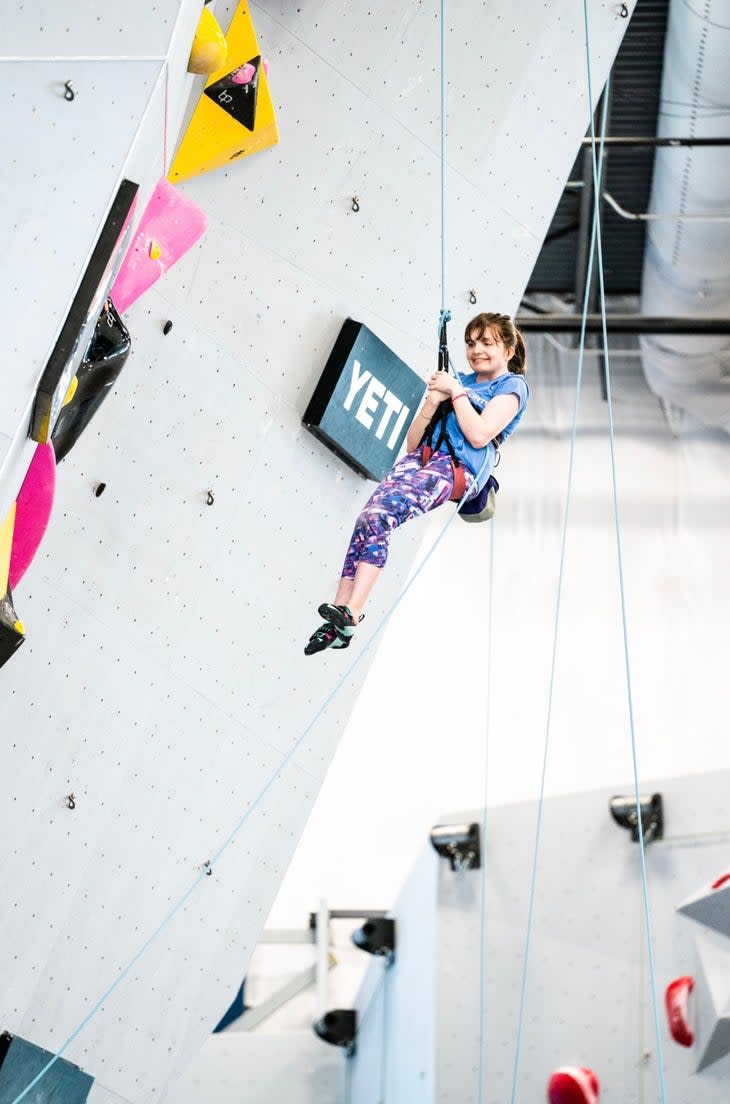
Day One: Qualifying
As competitors taped their fingers, tied their hair into braids, and double checked prosthetics and headsets (for the visually impaired climbers), the morning Texas sun cast a warm glow throughout the gym. After warming up, competitors attempted the qualifying routes.
As Ronnie Dickson, an above-the-knee amputee and accomplished climber, managed a sketchy foot swap on one of the qualifying routes, shouts of "Come on Ronnie!" erupted from several corners of the gym. It's a competition, but the community support is palpable throughout the facility. Most of the climbers know each other by name and the stoke for one another is visceral.
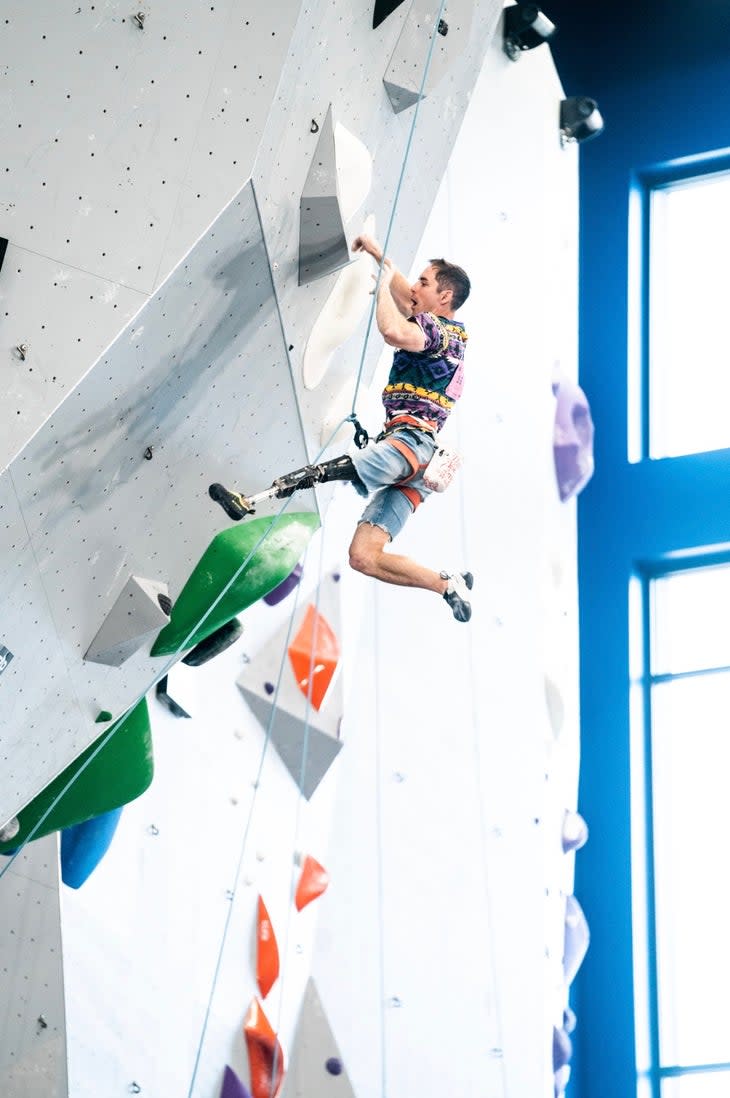
Routes are set for each category: lower limb, upper limb, and visual impairments, as well as neurological conditions affecting "range and power." Groups are further broken down by level of severity "as it applies to climbing performance," according to the IFSC rules. If an athlete's condition is unable to be classified for whatever reason, USAC Paraclimbing has an open category for athletes to compete without any classification status.
The classification process starts months before the competition, as athletes start sending in documentation of their condition(s), including medical scans, test results and doctor’s notes. There's also an in-person classification conducted the day before the main event. "It can be a painful process both physically and emotionally," said Rebecca Ingraham, education director for USAC who's been assisting with classifications for three years. Sometimes athletes are required to reclassify year after year if the severity of their disability could change, or if the IFSC changes the guidelines trying to keep up with Paralympic standards.
By the end of day one, the top female and male climbers of each classification group moved onto finals.
Day Two: Finals
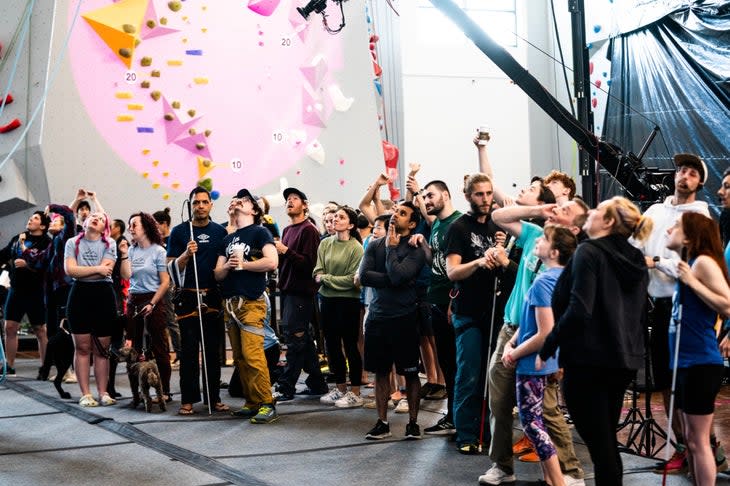
The visually impaired (VI) climbers competed first in the finals. The DJ brought down the drum and bass music as each VI climber approached the wall, with his or her caller by their side. A respectful hush filled the gym allowing blind climbers to clearly hear cues from their caller. Spectators inhaled and exhaled almost in unison during the VI climbs.
In her first Para Nationals, Seneida Biendarra won the top spot in the moderate visual impairment category. "I used to have an internal mental block dealing with my disability," she said, "I was just like, I want to be one of the other kids, I just want to climb with everyone else." But things changed for her after attending the Adaptive Climbers Festival last year and meeting so many other climbers open about their blindness. Realizing there's a whole community of passionate competitive blind climbers, she decided to give the competition scene a try.
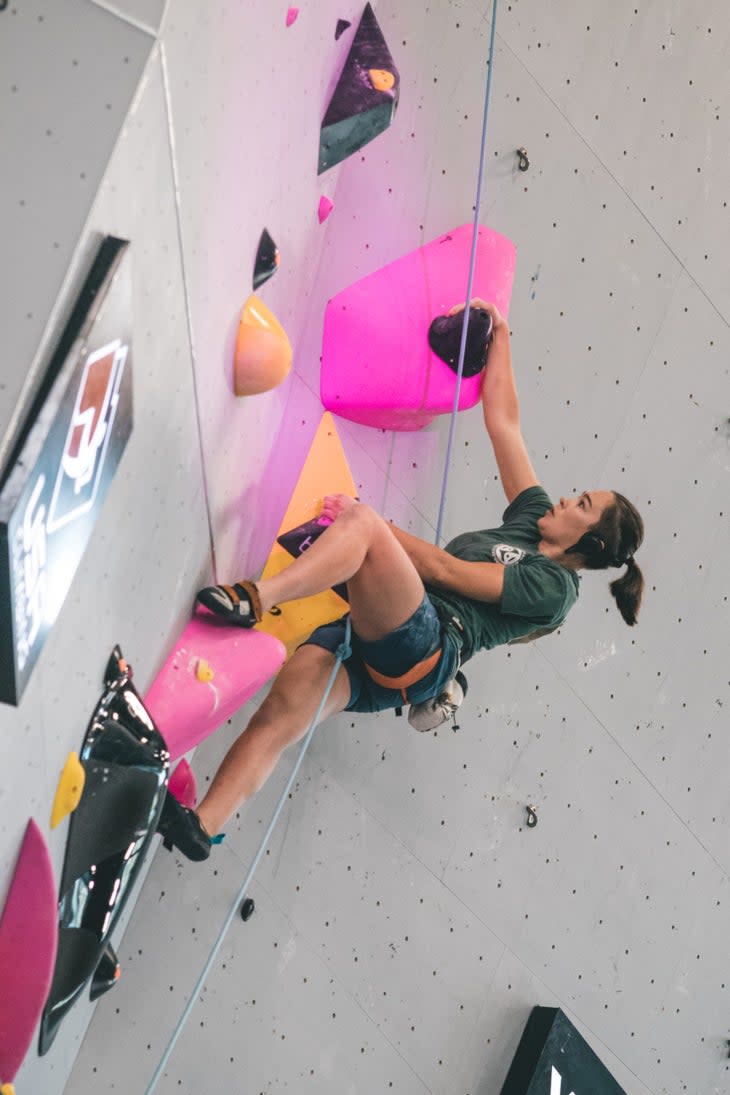
Melissa Ruiz has been competing since 2018 and placed first for female RP1 (range and power, severe impairment). Unable to produce much power from her core down and wrestling with spasticity in her legs, Ruiz said her climbing involves a lot of pulling with her arms, and working her legs into angles that use tension and pressure instead of pushing. "Sometimes I can drop my knee, twist it, and then force it," she said. Competitions are a way she reforms her technique, and of course, connects with other paraclimbers. "The community is the biggest part of this for me," said Ruiz, and because her neurological condition is getting worse with time, she added, "I use each year as if it’s the last".
For many, the opportunity to climb routes designed specifically for their disability is just as much of a draw to the comp scene as the competition itself. Wasif Shams, whose left leg is two inches shorter and lacks the power of his right, noted that gym routes often favor the right hand and left leg because of the oppositional forces necessary for climbing. He has to adapt his climbing, sometimes jumping, twisting and inventing moves that "make a 5.10a route, a 5.10c or d for me," he said. The routesetting has always been the main attraction for Wasif, but he said he's gained a lot, especially mentally, from competing. "You can bring big muscles to the game, but if your mental game is not there... it’s like a ship that’s got holes in it."
Though Wasif didn't make it to the finals, he stuck around to show support for his fellow paraclimbers. One of those climbers, Biendarra, said, "Climbing is already a band of misfits, and paraclimbing is like that on the next level."
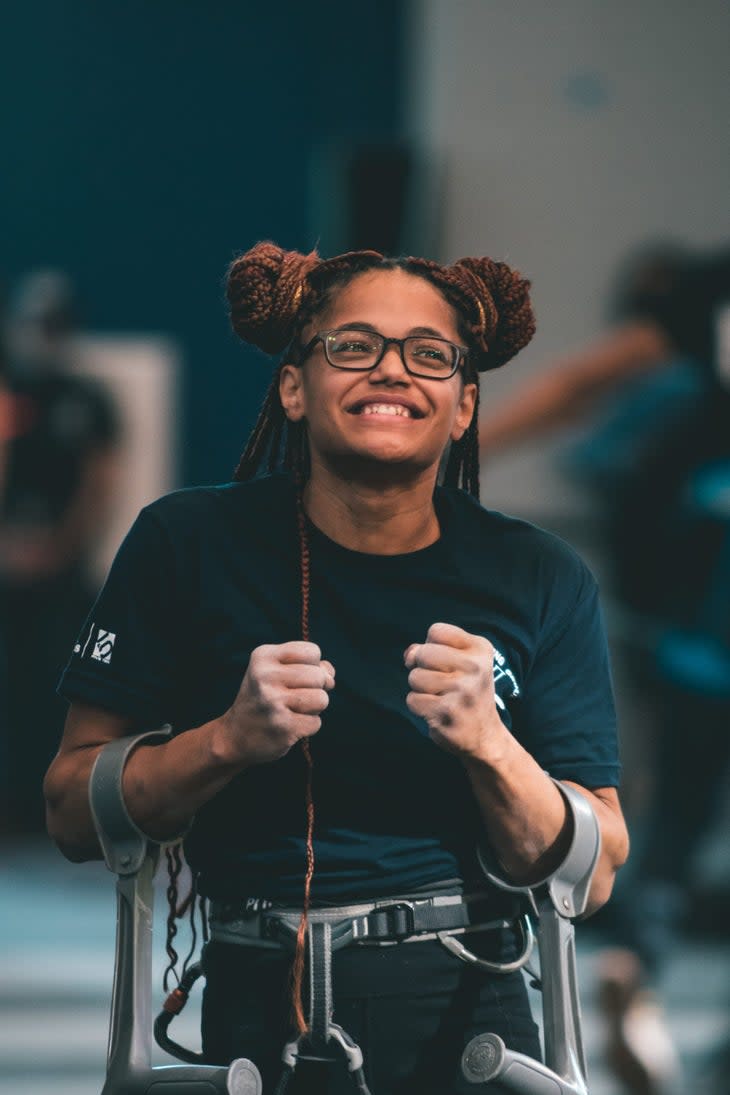
Carlie Cook, a seated climber said because there aren’t as many female seated climbers at the competitions, "I have a pretty tight community with the men in the category (seated climbers, AL1) and we’re just super supportive of each other." They know she doesn't like being alone on the podium. So, when she received her first place medal, her male counterparts rolled up next to her.
Paraclimbers who placed 1st, 2nd and 3rd in each classification category are now part of The U.S. National Climbing Team. Each category's top 10 qualify for the World Cup this May in Salt Lake City, Utah. And a smaller cohort of five from every group also qualify to compete in Switzerland and Austria.
Blind/Visually Impairments | ||
B1: Severe visual Impairment |
|
|
B2: Moderate visual Impairment |
* Alana Taub (unranked) |
|
B3: Mild visual impairment |
|
|
Lower Impairments | ||
AL1: Bilateral Lower Limb impairment |
|
|
AL2: Unilateral Lower Limb impairment or leg length difference |
|
|
Upper Limb Impairments | ||
AU1: Severe Upper Limb impairment |
| |
AU2: Moderate Upper Limb impairment |
|
|
Range and Power | ||
RP1: "Range, Power" severe impairment, affecting at least 2 limbs. |
|
|
RP2: "Range, Power" moderate impairment, affecting trunk and/or limbs |
|
|
RP3: "Range, Power" mild impairment, affecting trunk and/or limbs |
* Madisyn Taute (unranked) |
|
Youth | ||
Y |
|
|
Citizens (no classification needed) | ||
CIT1 Less than or equal to 5.9 |
| |
CIT2 Greater than 5.9 |
|
|
*Paraclimbing classifications are evolving as the sport grows with the categories becoming more nuanced as participation increases. There are a number of health conditions that severely impact a person's life that do not meet the current classification criteria.
Related Reading:
For exclusive access to all of our fitness, gear, adventure, and travel stories, plus discounts on trips, events, and gear, sign up for Outside+ today.

